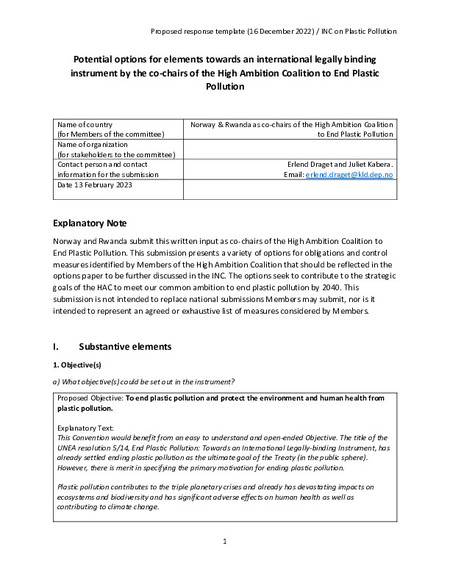Combating Oil Pollution In The Kuwait Action Plan Region - United Nations Environment Programme Regional Seas Reports and Studies No. 44

Date
1984Author
United Nations Environment Programme
Citation Tool
Bibliographic Managers
RT Generic T1 Combating Oil Pollution In The Kuwait Action Plan Region - United Nations Environment Programme Regional Seas Reports and Studies No. 44 A1 United Nations Environment Programme YR 1984 LK https://wedocs.unep.org/20.500.11822/27968 PB AB TY - GEN T1 - Combating Oil Pollution In The Kuwait Action Plan Region - United Nations Environment Programme Regional Seas Reports and Studies No. 44 AU - United Nations Environment Programme Y1 - 1984 UR - https://wedocs.unep.org/20.500.11822/27968 PB - AB - @misc{20.500.11822_27968 author = {United Nations Environment Programme}, title = {Combating Oil Pollution In The Kuwait Action Plan Region - United Nations Environment Programme Regional Seas Reports and Studies No. 44}, year = {1984}, abstract = {}, url = {https://wedocs.unep.org/20.500.11822/27968} } @misc{20.500.11822_27968 author = {United Nations Environment Programme}, title = {Combating Oil Pollution In The Kuwait Action Plan Region - United Nations Environment Programme Regional Seas Reports and Studies No. 44}, year = {1984}, abstract = {}, url = {https://wedocs.unep.org/20.500.11822/27968} } TY - GEN T1 - Combating Oil Pollution In The Kuwait Action Plan Region - United Nations Environment Programme Regional Seas Reports and Studies No. 44 AU - United Nations Environment Programme UR - https://wedocs.unep.org/20.500.11822/27968 PB - AB -View/Open
Item Statistics
Display item statisticsMetadata
Show full item recordDescription
This paper estimates that, during 1979, a total of about 144,000 metric tonnes of oil polluted the Kuwait Action Plan (KAP) Region and that, during the 10 years from 1980 to 1989, more than 1.5 million metric tonnes will pollute the Region. These totals include estimates for oil pollution from the following sources: natural seeps; offshore exploration and production; transportation losses, including terminal operations and both accidental and operational discharges; coastal refineries; atmospheric fall-out; coastal municipal wastes and coastal non-refinery industrial wastes; urban run-off; and river run-off. Among these sources, transportation losses contributed more than 58 per cent of the total amount in 1979, and offshore exploration and production contributed about 22 oer cent. According to these estimates, oil pollution in the KAP Region represented 3.1 per cent of the total oil pollution in the world, thereby contributing 47 times the average estimated amount for a marine environment of similar surface area.
Collections
Document Viewer
To read more, scroll down below.
Related items
Showing items related by title, author, creator and subject.
-
the High Ambition Coalition to End Plastic Pollution's written submission on the options for the legally binding instrument to end plastic pollution, including in the marine environment.
Norway & Rwanda as co-chairs of the High Ambition Coalition to End Plastic Pollution (2023-02-13) -
Chinese - Draft resolution on a framework for addressing plastic product pollution, including single-use plastic product pollution (version of 28 January 2022)**
United Nations Environment Programme (17/02/2022)




